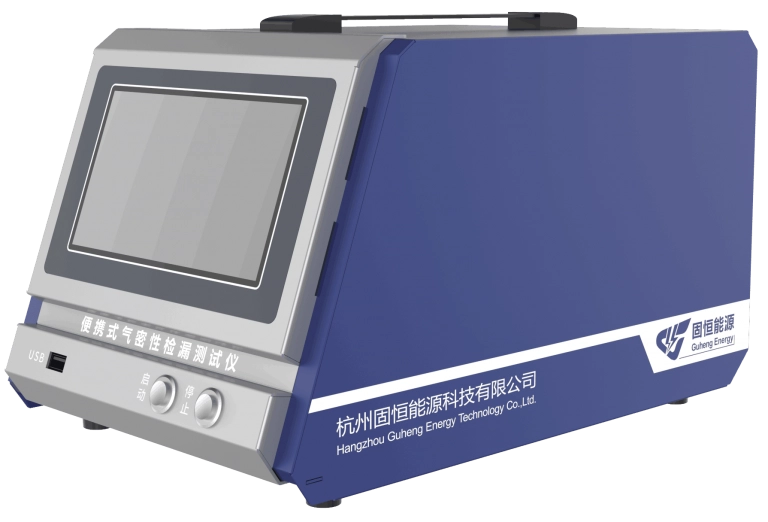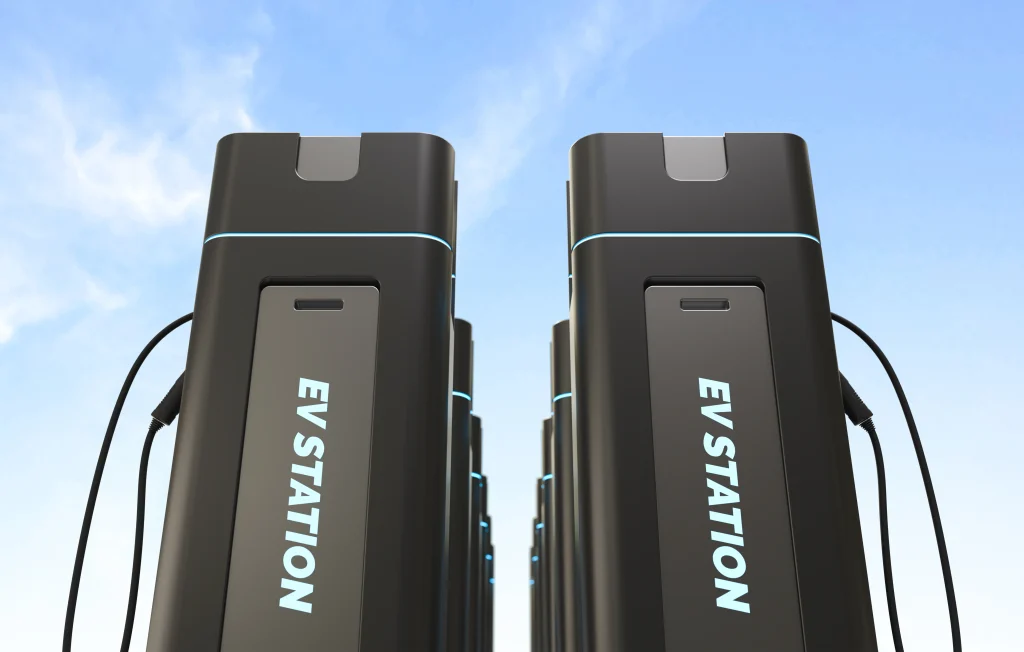With the rapid development of the electric vehicle and energy storage industries, new energy battery packs, as core components, have garnered significant attention for their safety and reliability. However, leakage in battery packs has emerged as a potential hazard affecting performance and safety. How to precisely detect leakage issues in new energy battery packs has become a critical technical challenge for the industry. This article will explore the causes of leakage, the importance of detection, common technical methods, and future development directions, while introducing Guheng Energy’s professional solutions in this field.
Common Causes Analysis of New Energy Battery Pack Leakage
Leakage in new energy battery packs often stems from multiple factors. Below is an analysis of several common causes:
Structural Design Issues in Battery Packs
Defects in the internal design of battery packs, such as overly dense cell arrangements or poorly planned cooling systems, may lead to localized overheating, triggering electrolyte leakage. Additionally, insufficient structural strength could result in shell damage under external impact, further causing leakage.
Aging and Failure of Sealing Materials
Sealing materials in battery packs (e.g., rubber gaskets or adhesives) may age over time due to high temperatures, humidity, or chemical reactions, leading to a decline in sealing performance. Once the seal fails, the electrolyte may seep out, posing a leakage risk.
Influence of External Environmental Factors
Harsh external conditions, such as extreme temperatures, humidity, or mechanical vibrations, can exert pressure on battery packs. For instance, prolonged exposure to high humidity may accelerate corrosion of sealing materials, while severe vibrations could loosen internal connections, inducing leakage.
Importance of Detecting Leakage in New Energy Battery Packs
Leakage not only impacts battery performance but also poses significant safety risks, making its detection critically important.
Impact of Leakage on Battery Performance
Electrolyte leakage can lead to reduced battery capacity, increased internal resistance, and even short circuits. For example, if a lithium battery loses electrolyte due to leakage, its cycle life will be significantly shortened, and energy output efficiency will decrease.
Potential Safety Threats from Leakage
Leakage can not only cause battery self-ignition or explosions but also corrode other components in vehicles or energy storage systems. Particularly in electric vehicles, leakage may result in high-voltage system failures, endangering the safety of drivers and passengers.
Common Technical Methods for Detecting Leakage in New Energy Battery Packs
To precisely detect leakage issues, the industry has developed various technical methods. Below is a detailed analysis of three commonly used techniques:
Pressure Testing Method
Method Principle and Scope of Application
The pressure testing method involves applying a certain pressure inside the battery pack and monitoring pressure changes to determine if a leak exists. If the pressure drops faster than expected, it indicates potential leakage. This method is suitable for sealing tests, particularly during production.
Advantages and Disadvantages Analysis
- Advantages: Simple operation, low cost, suitable for batch testing.
- Disadvantages: Limited sensitivity to minor leaks, unable to pinpoint specific leakage locations.
Gas Detection Method
Detection Principle and Implementation Process
The gas detection method uses a specific gas (e.g., helium) as a tracer, injecting it into the battery pack and then using a gas detector to check for external leakage. This method combines high sensitivity with rapid response capabilities.
Technical Advantages and Limitations
- Advantages: High detection accuracy, capable of precisely locating leak points.
- Disadvantages: Requires specialized equipment and is costly, making it unsuitable for rapid on-site testing.
Guheng Energy’s Portable Air-tightness Leak Test Instrument QMM-AK1-1 is based on a similar principle, optimized for portability and detection efficiency.
Infrared Imaging Technology
Technical Features and Application Scenarios
Infrared imaging technology detects leakage by identifying abnormal temperature variations on the battery pack’s surface. Electrolyte leaks typically cause localized temperature differences, which infrared cameras can quickly capture. This technique is ideal for on-site maintenance and real-time monitoring.
Technical Advantages and Limitations
- Advantages: Non-destructive testing, fast response, strong visualization effects.
- Disadvantages: Sensitive to ambient temperature, requires professional operators.
Below is a comparison of the three methods:
| Detection Method | Sensitivity | Cost | Application Scenario | Location Capability |
| Pressure Testing | Medium | Low | Production Stage | Weak |
| Gas Detection | High | High | Precision Testing | Strong |
| Infrared Imaging | High | Medium | On-Site Maintenance | Moderate |
Future Directions for Improving Leakage Detection Efficiency in New Energy Battery Packs
As technology advances, leakage detection is moving toward greater efficiency and intelligence.
Application of Intelligent Detection Equipment
In the future, intelligent detection equipment will integrate sensors with AI algorithms to achieve automated leakage monitoring. For example, devices could analyze real-time data, automatically issue alerts, and locate leak points, reducing human intervention.
Role of Data Analysis and Predictive Technology in Detection
Big data-based predictive models can analyze historical operating data of battery packs to provide early warnings of potential leakage risks. This approach significantly enhances the foresight of detection.
Guheng Energy: A Trusted Expert in New Energy Service Technology Solutions
As a technical pioneer in the new energy field, Guheng Energy is committed to providing reliable battery detection and maintenance solutions.
Company Background and Technical Strength Introduction
Founded years ago, Guheng Energy focuses on the research and application of new energy technologies, holding over 30 patents (including 6 invention patents) and 28 software copyrights. The company has developed several industry-first products, such as the Battery Pack Service Terminal Final Inspection Instrument (EOS-TEST), positioning its technical strength at the forefront of the industry.
Core Services and Advantages in the New Energy Field
Guheng Energy offers full-lifecycle services from research and development to maintenance, with products certified under ISO9001 and multiple CE certifications. For example, the Battery Pack Service Terminal Final Inspection Equipment EOS-TEST integrates high-precision detection technology and is widely used in electric vehicles and energy storage applications.
Frequently Asked Questions
Question 1: Why Does Leakage in New Energy Battery Packs Affect Vehicle Performance?
Leakage in new energy battery packs leads to electrolyte loss, reducing the efficiency of electrochemical reactions, which manifests as capacity degradation and reduced driving range. Additionally, leakage may cause short circuits or increased internal resistance, further exacerbating performance decline. For instance, in lithium batteries, insufficient electrolyte could reduce cycle life from 1,000 cycles to just a few hundred, severely impacting the vehicle experience.
Question 2: Is Infrared Imaging Technology Suitable for All Types of New Energy Battery Packs?
Infrared imaging technology is not a universal solution. Its effectiveness depends on the battery pack’s shell material and leakage characteristics. For metal-shell battery packs, it can effectively detect temperature differences; however, if the shell is made of highly insulating material or the leakage is minimal, its performance may be limited. Combining it with other methods (e.g., gas detection) is recommended for a comprehensive evaluation.
Question 3: What Unique Advantages Does Guheng Energy Offer in Leakage Detection?
Guheng Energy boasts multiple patented technologies in leakage detection. It combines high sensitivity with portability, making it ideal for rapid on-site testing. Furthermore, the company provides customized solutions and fast-response after-sales support, ensuring comprehensive customer satisfaction.
Conclusion
Leakage in new energy battery packs affects both performance and safety, making precise detection a key to ensuring industry development. From pressure testing to infrared imaging, various technical methods offer distinct advantages, while intelligence and data analysis will shape future trends. Guheng Energy, with its advanced technology and extensive experience, provides reliable leakage detection solutions. For more information, visit the Guheng Energy homepage to explore professional products and services.







